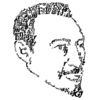
John Schofield, Archaeologist at St Paul's Cathedral, will give a lecture at the cathedral on Saturday, the 11th of April, 2015, at 13:00 (1:00 pm), in the Wren Suite in the cathedral crypt.
The lecture will be entitled The Archaeology of St Paul's Cathedral, to the Great Fire.
Schofield will discuss the history and archaeology of the cathedral site from Roman times, tracing the designs of the various cathedrals built on this site since 604 AD, culminating in an account of medieval St Paul's, the largest building in medieval Britain, which was destroyed in the Great Fire of London in 1666.
This talk will include Schofield's account of recent discoveries in and around the cathedral, especially new information he has found in the London Metropolitan Archives about the St Paul's Deanery, where the John Donne lived when he served as dean of the cathedral from 1621-31.
The talk is free but places are limited, so tickets are required. When you arrive, the crypt is accessible via the entrance on the north side of the cathedral, near the West Front.
Go here to book your ticket:
https://www.eventbrite.co.uk/e/the-archaeology-of-st-pauls-cathedral-to-the-great-fire-free-lunchtime-talk-tickets-16200165130
Go here to book your ticket:
https://www.eventbrite.co.uk/e/the-archaeology-of-st-pauls-cathedral-to-the-great-fire-free-lunchtime-talk-tickets-16200165130
In addition to being the Cathedral Archaeologist, Schofield is author of St Paul's Cathedral Before Wren (English Heritage, 2011), and a member of the Production Team for the award-winning Virtual Paul's Cross Project, a digital reconstruction of St Paul's Churchyard in 1622.





